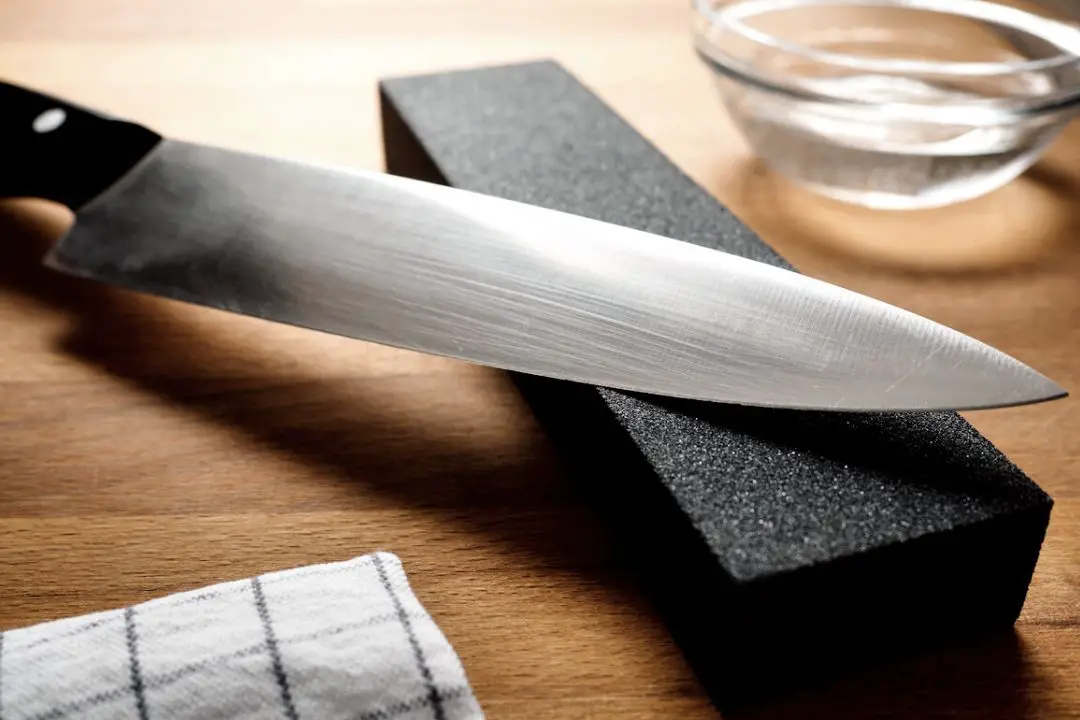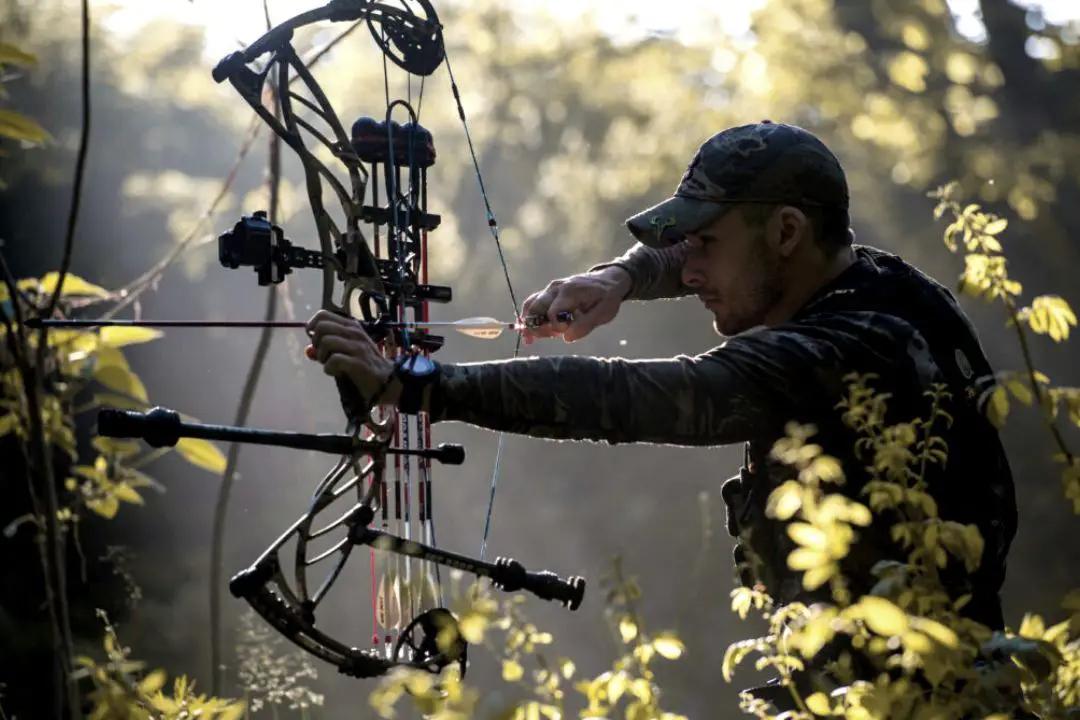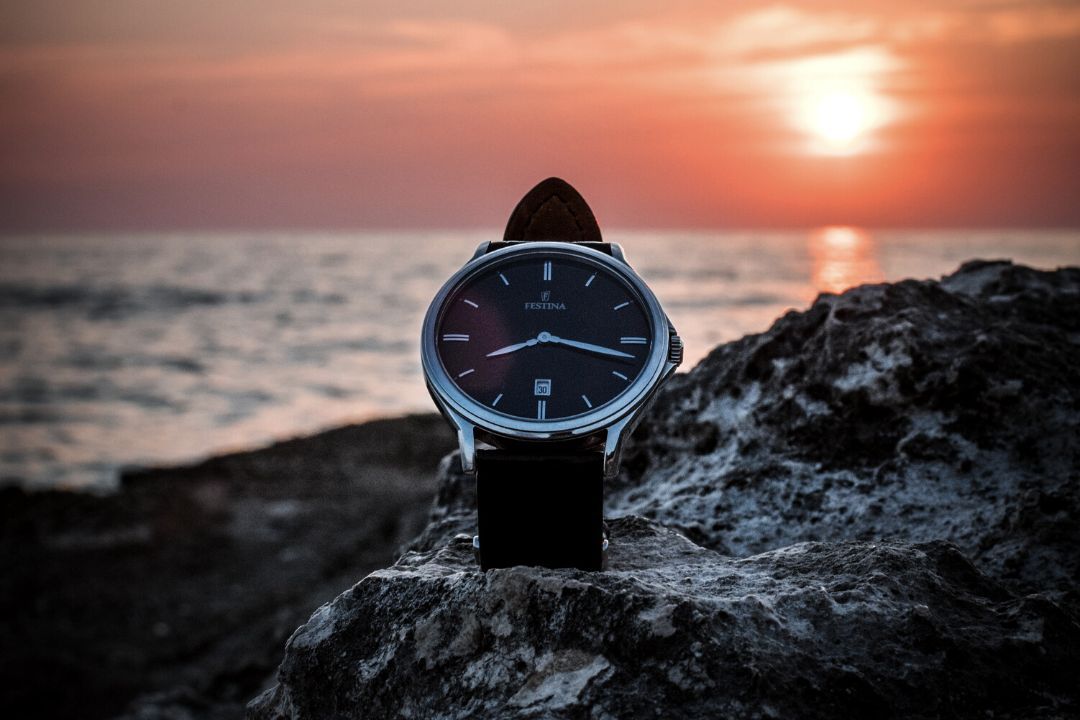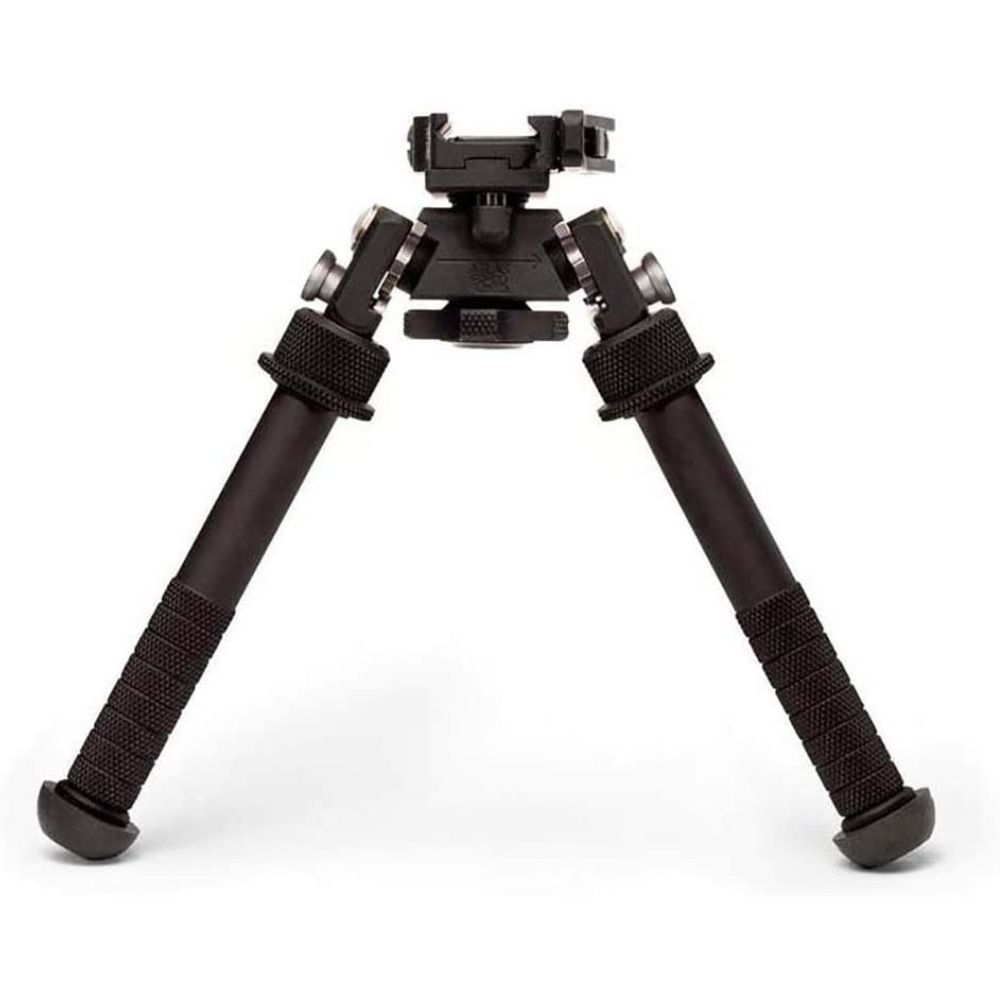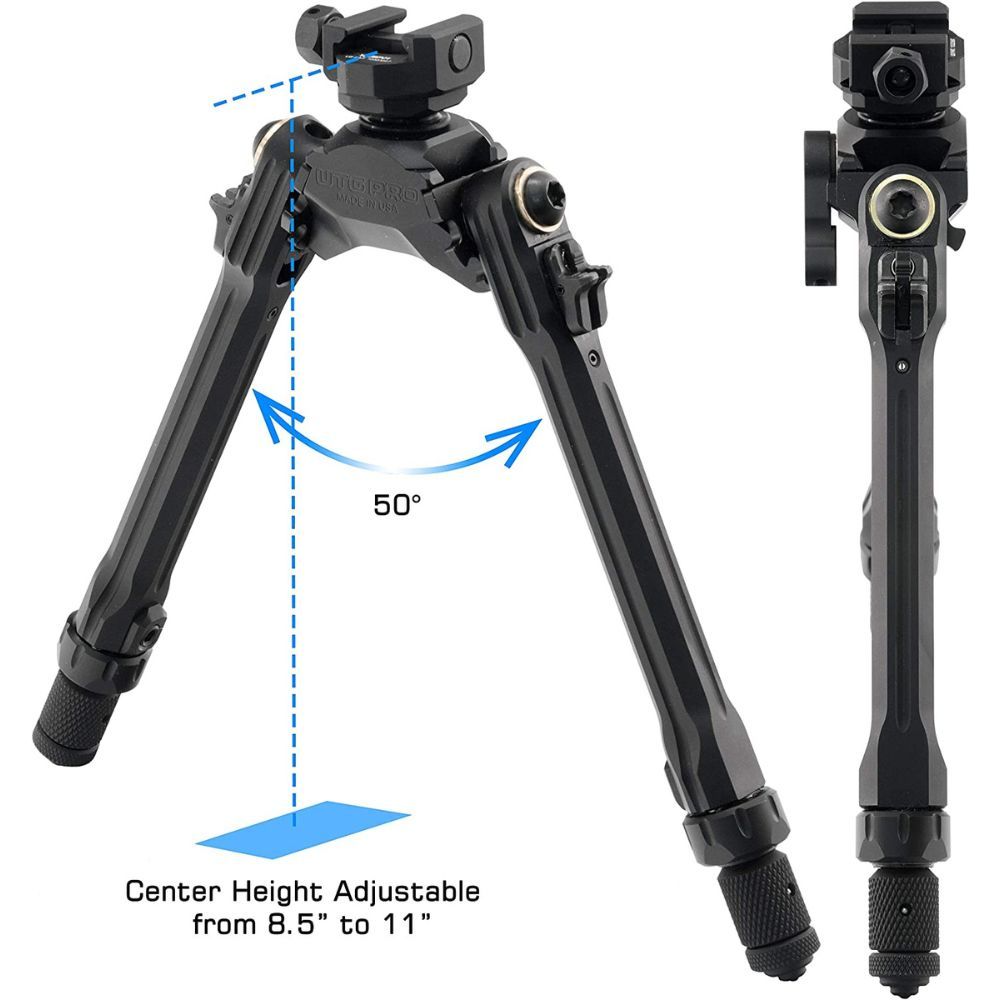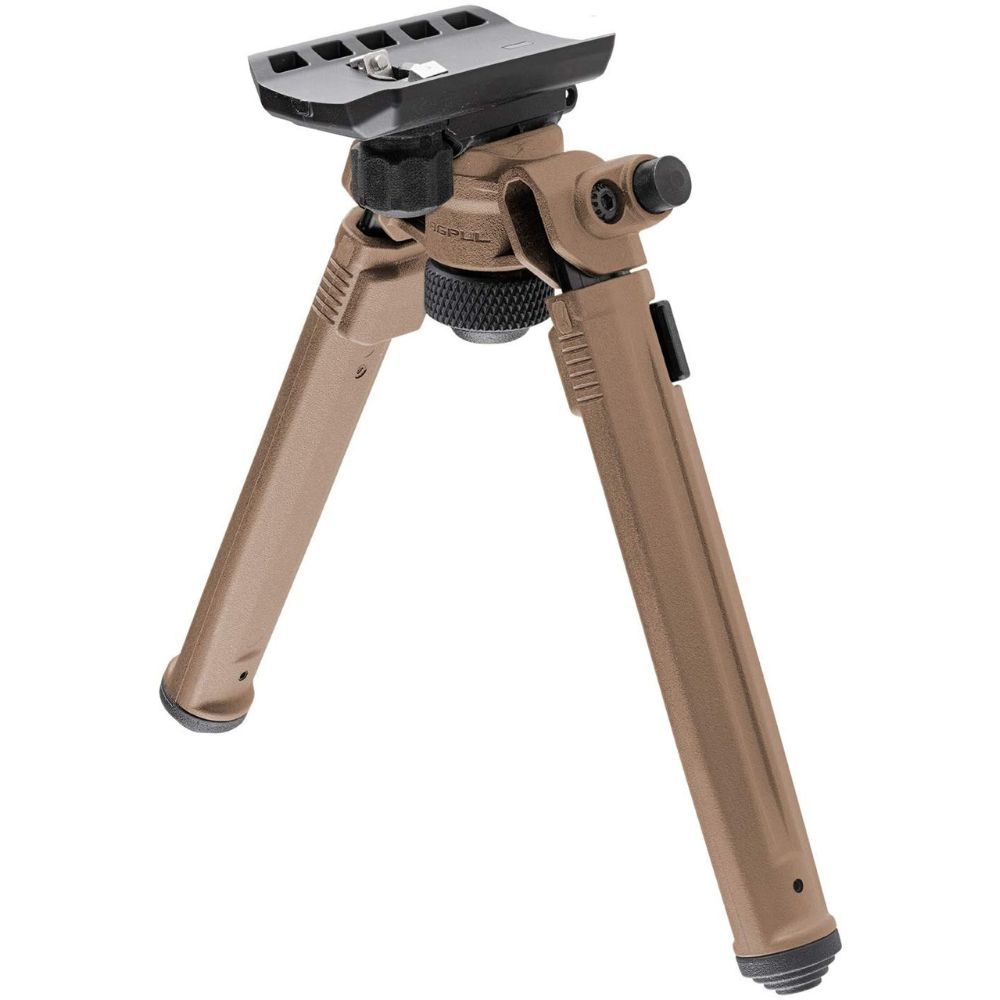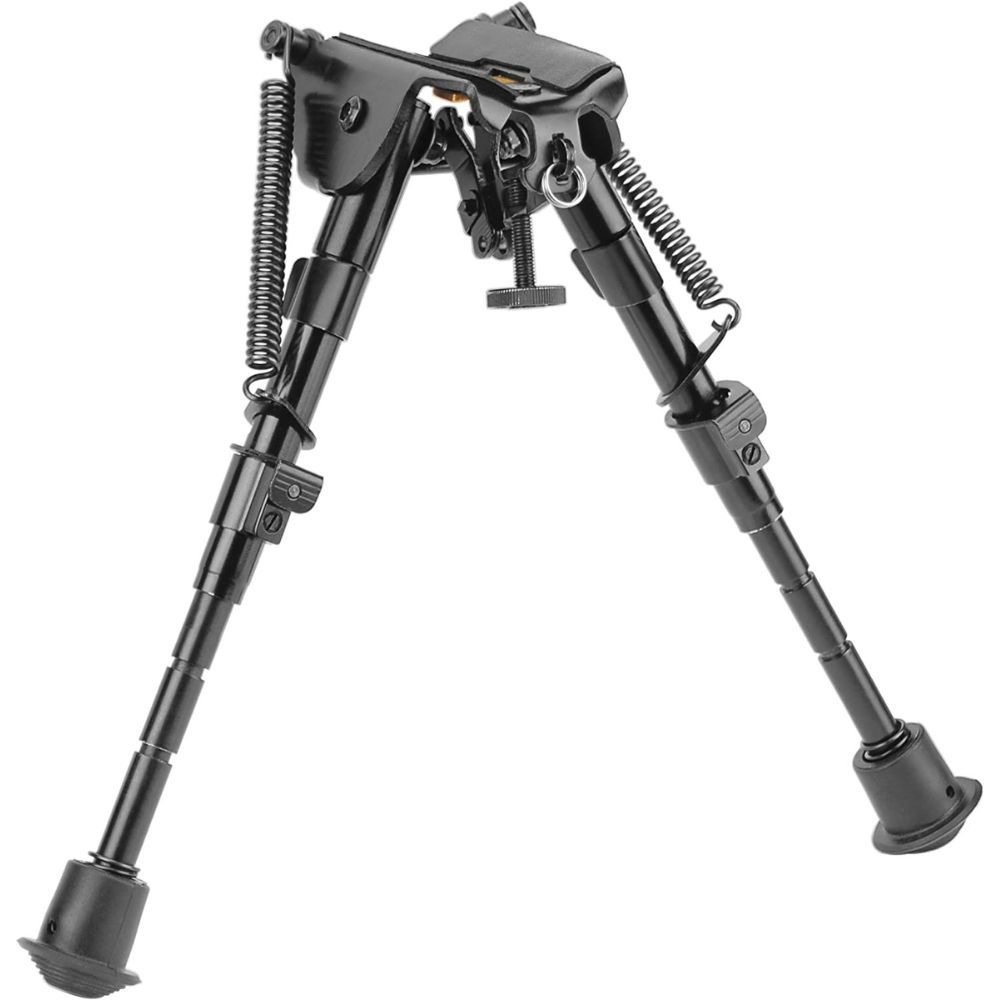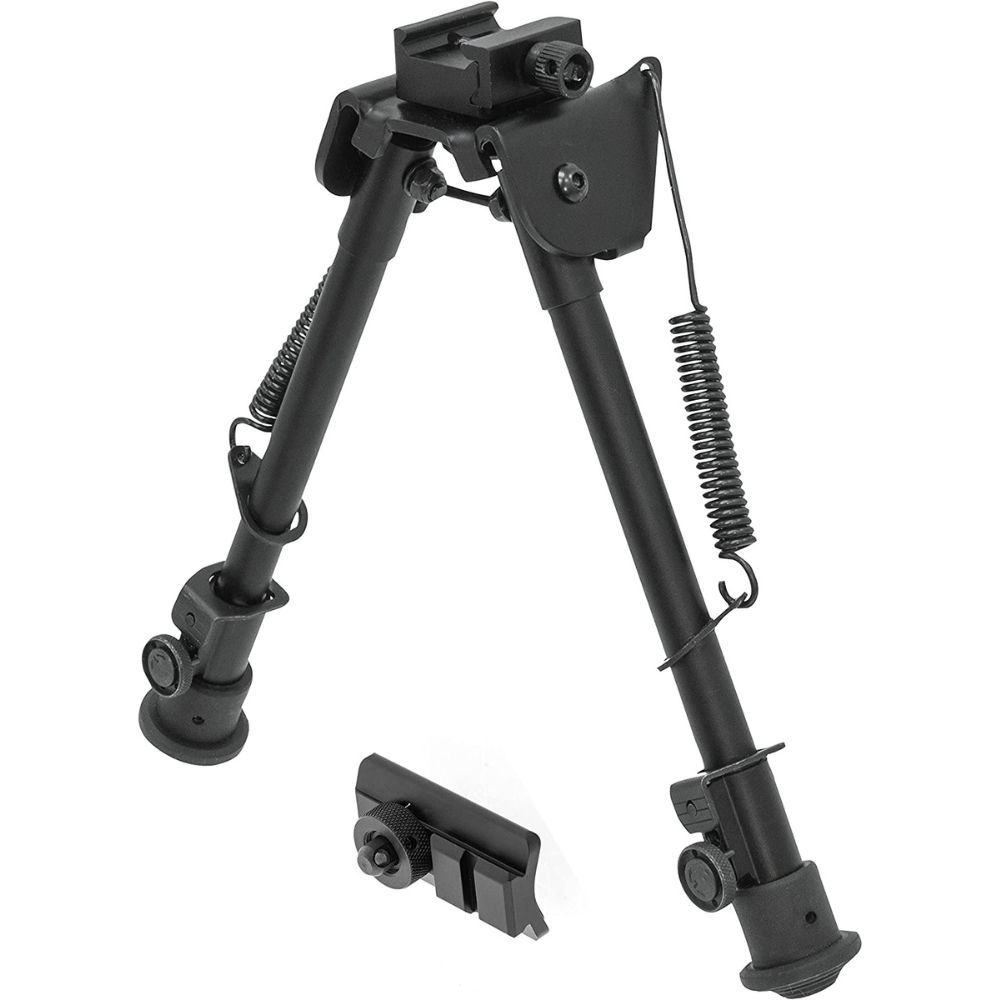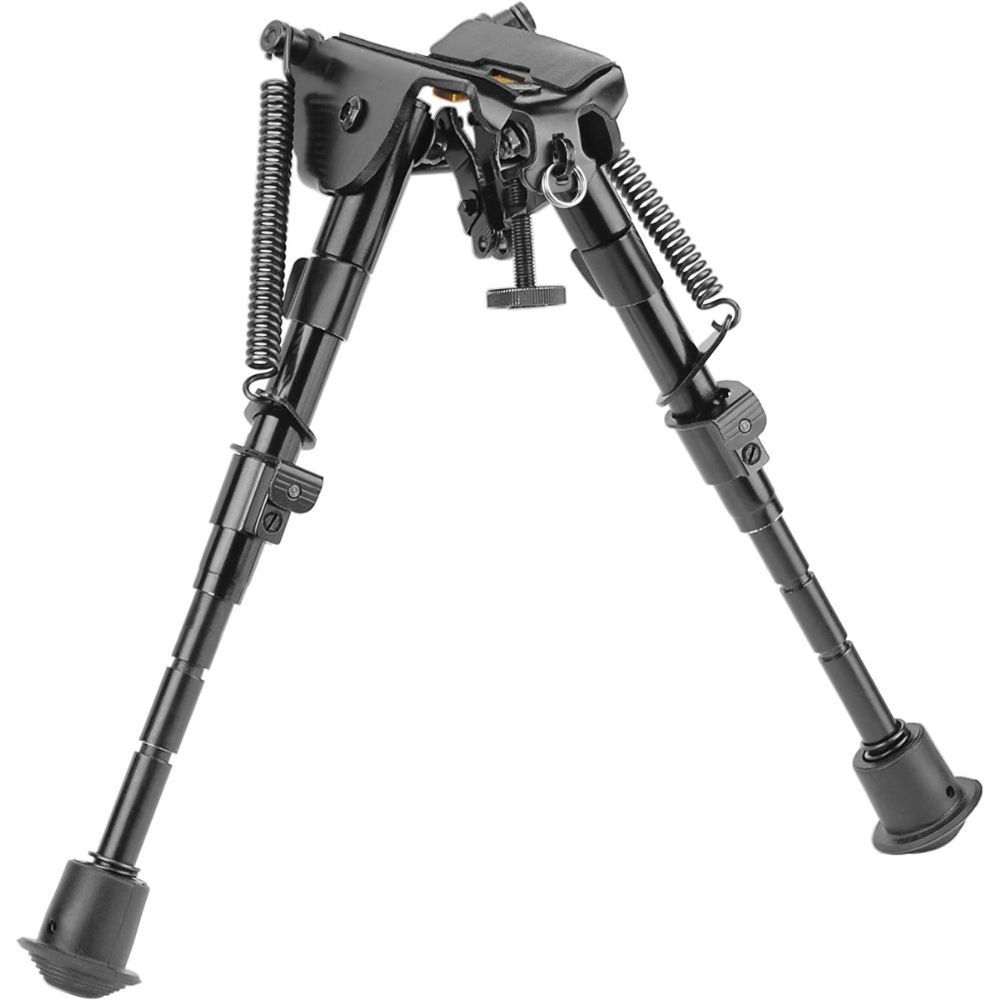Best Rifle Bipods Reviewed: Not Using them Will Make You a Rookie
If you are looking for the best hunting bipod, then this is the article that will help you make a much more informed decision. Here are reviews of 6 top-rated rifle bipods from all price ranges so that you can find the perfect one for you
Looking for the best rifle bipods to improve your accuracy during your upcoming hunting trip?
We know that having the best hunting rifle is not just showing how powerful it is, but hitting the targets with every bullet drop. That’s why we have provided reviews of the top 6 rifle bipod models from all price ranges to choose from so you can find the perfect one for your specific shooting needs.
A bipod will give you the stability you need to make those precise shots and hit your target every time. With our help, you can find the perfect bipod for your rifle and start making every shot a kill shot.
Read along to know more about these hunting bipods and purchase the one that suits you best!
Selecting The Best Rifle Bipod
You've been hunting for days, weeks, even months, and still haven't managed to get that buck you've been dreaming of.
It's not for lack of trying. You've tried all the tricks in the book, but something is still missing.
The best hunting bipod can make all the difference in your success rate. We combed through thousands of user reviews across several forums and Amazon and consulted some seasoned hunters and found the perfect bipods for you.
Premium Range Bipods
Why You Will Love It
Looking for a bipod that is durable, reliable, and extremely strong? Look no further than the Atlas Accu-Shot PSR. This Atlas bipod features a user-friendly design that is quick and easy to set up.
With its extendable legs, it is perfect for use on uneven terrain. Plus, its rapid one-handed adjustments make it a breeze to use in the field. Whether you are shooting varmints or targets, the Atlas PSR is sure to give you the stability you need for precision accuracy.
So don't miss your chance to own the best bipod on the market!
What You Should Know
Material: Aluminum
Height: 4.75 to 9 inches
Weight: 11.42 ounces
Height: 6.56 to 9 inches
Attachment Type: Picatinny Rail
The Atlas Accu-Shot PSR bipod is a versatile and adjustable bipod that is perfect for use with most modern rifles. The height can be adjusted from 5 inches to 8 inches, and the legs can lock at 0, 45, 90, 135, and 180 degrees.
The Atlas PSR bipod also features 30 degrees of cant and 30 degrees of pan, making it easy to keep your rifle level on uneven terrain. In addition, the legs are made of sturdy aluminum and feature rubber feet that grip the ground for added stability.
Whether you are shooting at the range or in the field, the Atlas Accu-Shot PSR bipod will help you stay on target.
What Could Have Been Better
For hunters, a bipod is an essential piece of equipment. It helps to stabilize your rifle, making it easier to take accurate shots. There are many different bipods on the market, but the Atlas Accu-Shot PSR is the best of the bunch.
It's made from high-quality materials and features a number of innovative design touches that make it a joy to use in the field. The biggest downside to the Atlas Accu-Shot PSR is its price tag, it's one of the more expensive bipods on the market. However, its quality and performance justify its price, making it an excellent choice for serious hunters.
Why You Will Love It
No matter what style of rifle you have, the UTG PRO TBNR Bipod is a must-have accessory for any marksman. This professional-quality bipod attaches to either a 1913 Picatinny rail or an M-Lok system, giving you quick-release action thanks to the easy-mount lever.
Plus, the variety of possible adjustments means you can use this bipod on any challenging, or uneven grounds when hunting.
So don't be caught without the UTG PRO TBNR Bipod the next time you're out in the field!
What You Should Know
Height: 8.8" - 11"
Material: Aluminum
Height: 7 to 11 Inches
Weight: 1.385 to 1.510 lbs.
Attachment Method: Picatinny Rail
The UTG PRO TBNR Bipod has many features that make it perfect for use with many rifles. The aluminum surfaces are Type III Class 2 matt black hard coat anodize-finished, and the steel parts are manganese phosphate treated. The TBNR bipod is incredibly durable, thanks to its all-metal construction.
The Picatinny mounting deck enables the bipod to be mounted directly onto the mounting rails fitted under the forend of many "tactical" PCP rifles. Alternatively, swivel stud mounts are available separately for use on wood stocks.
The UTG PRO TBNR Bipod is a versatile and sturdy bipod that is perfect for a variety of uses. The tension-adjustable panning allows for a complete 360 degrees of movement, while the 50-degree open-angle and 19-degree tilt provide plenty of options for adjusting the bipod to your needs.
The five lockable leg positions and adjustable length legs make it easy to find the perfect position for your use, whether you're shooting at long range or close range. The legs are adjustable from 6 to 9 inches, and the height is adjustable from 2 to 5 inches.
The legs can be folded forward or retracted as required when not deployed for use. The leg extensions feature steel ball-bearing-controlled lock rings for rigidity. They also provide spring-loaded legs for easy retraction when required.
Whether you're using it for hunting, target practice, or competition shooting, the UTG PRO TBNR Bipod is sure to provide a stable platform for your firearm.
What Could Have Been Better
The UTG PRO TBNR Bipod is a high-quality bipod that is great for range and precision shooting. The biggest downside to this bipod is the price, which is quite high. Additionally, some users have found that the tightening knob can be a bit slippery, making it difficult to adjust the legs.
Overall, the UTG PRO TBNR Bipod is a great bipod for range and precision shooting, but it is quite expensive and the tightening knob can be a bit slippery.
Mid-Range Bipods
Why You Will Love It
The Magpul Bipod is the perfect choice for hunters and target shooters who are looking for a low-profile support system. This lightweight bipod is available with both swivel-stud attachment and rail mount versions. Magpul offers superb stability at an affordable price. It also comes in two color choices to suit your style.
Constructed from durable materials, the Magpul Bipod is built to last, and it also comes with a limited lifetime warranty, making it an excellent choice for your shooting needs.
What You Should Know
Weight: 13 ounces
Material: Aluminum
Height: 6.3 to 10.3 inches
Attachment Type: Pic/M-LOK/Sling QD/A.R.M.S. 17S
This made-in-USA bipod is a versatile and reliable tool for shooters of all experience levels. Made of lightweight Mil-Spec hard anodized 6061 T-6 aluminum and Injection-molded polymer, the bipod is designed for durability and easy maneuverability.
It has height adjustable legs with Posi-lock wheeled leg locks. The Magpul Bipod also has a panning base which allows the user to pan the rifle left or right while on target. The Magpul Bipod is available in two versions, the Standard and the Tactical.
The Standard version weighs 10.1 ounces and extends from 6.3 inches to 9.4 inches. The Tactical version weighs 11.2 ounces and extends from 7.9 inches to 11 inches. There is also a Picatinny rail adapter available for use with MIL-STD-1913 Picatinny rails.
The six-position legs retract with the push of a button and swing into action with the push of another button, making it easy to set up and take down. A dial allows users to adjust for tilt and panning, ensuring a steady shot every time.
Whether you're a seasoned marksman or a weekend warrior, the Magpul Bipod is a great choice for any shooting application.
What Could Have Been Better
The Magpul Bipod is a lightweight bipod designed for use with light and medium recoil rifles. It is not appropriate for heavy recoiling rifles such as magnum caliber rifles or AR-10/SR-25 type rifles and can result in a significant bipod bounce. However, for most hunting purposes it is the best mid-range bipod.
Why You Will Love It
Harris bipods are a time-tested and price-friendly accessory for your modern semi-auto or bolt action rifle. The Harris Engineering S-BRM bipod is the perfect choice for hunters who want a stable and reliable bipod that won't break the bank.
The S-BRM bipod has a lightweight but well-constructed design that looks awesome, performs well, and is incredibly easy to install.
You can even quickly switch it from one rifle to another without much hassle. It ensures maximum performance from your rifle. No need to worry about quality, as this bipod is made with premium materials right in the USA.
Whether you're looking for a versatile and affordable bipod for target shooting or hunting, the Harris Engineering S-BRM is a perfect choice.
What You Should Know
Weight: 14 ounces
Height: 6 to 9 inches
Attachment: Picatinny rail/Sling Swivel
The Harris Engineering S-BRM rifle bipod is made from heat-treated steel and hard alloys for superior durability in any weather condition. This bipod also features a unique swiveling head that can turn 45 degrees, giving you greater flexibility when aiming your weapon.
It features 6 to 9-inch height adjustable legs that provide a stable shooting platform, though mostly suited for shooting from even surfaces. And at around 14 ounces, this bipod is lightweight, making it easy to carry in the field.
Furthermore, it comes with a tension adjustment knob on the hinged base to ensure a secure fit and help to keep your weapon balanced and steady. So make sure you are equipped with these bipods before you leave for your hunting trip.
What Could Have Been Better
The Harris Engineering S-BRM Bipod is a solid piece of equipment that is well-made and durable. However, it is not quite as heavy-duty as some precision shooters might need, and it can be difficult to tilt. This bipod comes without a panning feature.
Also, you have to separately buy a Picatinny rail mount adapter to securely attach this product to your rifle as it isn't included in the purchase of this product.
However, most hunters find that it is more than enough for their needs. And overall, the Harris Engineering S-BRM Bipod is a good choice if you are looking for a value pick.
Budget Range Bipods
Why You Will Love It
The UTG Tactical OP Bipod is perfect for any hunter who is willing to get the most stable bipod without spending much on it. This bipod comes in two versions, and two different height options. We loved the quick-detachment feature which makes it easy to change up your setup on the fly.
This tactical bipod comes with both Picatinny rails and Swivel stud mounts for all your needs. The aluminum frame is durable and lightweight, making it perfect for any outing.
With its sturdy design and easy-to-use features, the UTG Tactical Bipod is a must-have for all your shooting needs on a budget.
What You Should Know
Material: Aluminum
Weight: 13.3 ounces
Height: 8.3-12.7 inches
Dimensions: 7.7 x 6.3 x 3.5
Mount: Picatinny/ Swivel Stud
The UTG Tactical OP Bipod is a versatile and durable piece of equipment that is a variety of different applications. The bipod has a robust spring tensioner connected to each leg, which allows it to withstand a great deal of force.
Additionally, the bipod includes a panning feature that allows the user to rotate the bipod while the Posi-Lock feature prevents the legs from slipping. The extendable/foldable legs make the bipod easy to transport, and the dual mounts provide a secure attachment point for the bipod to a variety of different surfaces.
With all these the UTG Tactical OP Bipod is a great choice for anyone looking for a high-quality and versatile bipod on a budget.
What Could Have Been Better
One of the main drawbacks is that the external springs could get caught on things when you are out hunting. Additionally, this bipod is somewhat heavier than some other models on the market.
However, if you are willing to overlook these minor issues, the UTG Tactical OP Bipod is a great budget choice for anyone in the market for a new bipod.
Why You Will Love It
The Caldwell XLA Pivot Bipod is a versatile and user-friendly tool that provides a stable shooting platform in a variety of positions. The legs are made of lightweight aluminum and deploy quickly and easily with the push of a button. They can be adjusted to the desired length, and the tightness screw ensures they stay in place.
The slim profile allows for easy movement when shooting from the prone position, and the bipod mounts quickly and securely to nearly any firearm with a sling swivel stud.
Available in four size options, the XLA Pivot Bipod is an essential piece of equipment for anyone who wants to be able to shoot accurately in a variety of situations.
What You Should Know
Mount: Pivot
Weight: 12 ounces
Material: Aluminum
Height: 6 to 9 inches
Dimensions: 4.8 x 12.2 x 2.2 inches
The Caldwell XLA Pivot Bipod is perfect for a variety of shooting positions. It has a padded base and rubberized feet that provide stability on uneven ground.
The notches on the legs make it easy to index the bipod, and the 18-degree bi-directional cant gives you the perfect angle for your shot. The swivel stud attachment makes it easy to attach the bipod to your gun, and the extended height gives you plenty of clearance for a comfortable shot.
Whether you are shooting at the range or in the field, the Caldwell XLA Pivot Bipod is a great budget choice for a stable, accurate shot.
What Could Have Been Better
The Caldwell XLA Pivot Bipod is a budget-friendly option for those looking for a decent bipod. However, there are some build quality issues to be aware of. The mounting system is not very secure, though you may replace the screws with something more powerful to get more stability.
Additionally, the rubber grips are not attached in a secure way to the legs, which can result in wobbliness. Despite these issues, the Caldwell XLA Pivot Bipod is still a good option for those on a budget.
And if you love long-range shooting, also check out our article on the best spotting scopes.
Frequently Asked Questions
If you're new to hunting, or just thinking about buying your first bipod, there are a lot of questions that need answering.
Do you really need a bipod? What type should you buy? How do they work? How do you use them?
We've got the answers to all those questions and more. Our FAQ section is packed with information on hunting bipods, from what they are and how they work, to the best way to use them for different types of shots.
How does a bipod work?
A bipod is essentially two legs that attach to the front or rear of your rifle, themselves joined by a central pivot point. This gives you a stable platform to rest your rifle on when taking aim, helping you to avoid any unwanted movement that could ruin your shot.
There are many different styles and designs of bipods on the market, but they all generally work in the same way. Most bipods will have some form of adjustment so you can set them up for use on different surfaces and terrain, as well as extend or retract the legs to get the perfect height for your needs.
Some bipods also come with additional features such as panning or tilting capabilities, which can be helpful when trying to take a shot from an uneven surface.
Should I use a bipod while hunting?
There are a few things to consider when deciding whether or not to use a bipod while hunting.
First, what kind of game are you hunting? If you're after a small game like rabbit or squirrel, a bipod may not be necessary because they're usually hunted at close range. But if you're hunting deer or larger animals, using a bipod will help you steady your aim and make it easier to take the shot.
Second, how mobile do you need to be? If you're going to be stalking prey on foot, a bipod may slow you down and make you less stealthy. But if you'll be staying in one spot for most of the hunt, a bipod can be helpful in getting a steady shot.
Finally, consider the terrain. If you're hunting in an open country with few obstacles, a bipod may not be necessary. But if you'll be shooting from a ground blind or other hiding spots, or if the terrain is rough and uneven, a bipod can give you the stability you need to make a successful shot.
How do you use a rifle bipod?
Rifle bipods are an important part of a hunter's kit. They provide stability and accuracy when firing a rifle from the prone position, or from other improvised positions.
Generally speaking, there are two main types of bipods: those that clamp onto the rifle barrel, and those that attach to the stock of the rifle. The type you use will depend on your rifle and your shooting style.
To use a bipod, first find a solid surface to mount it on. If using a barrel-clamping bipod, loosen the clamping screws until the bipod is loose enough to fit over the rifle barrel.
Make sure that both legs of the bipod are flat against the surface, then tighten the clamping screws until the bipod attaches. If using a stock-mounting bipod, loosen the mounting screws until the bipod is loose enough to slide onto the stock.
Make sure that both legs of the bipod are flush against the surface of the stock, then tighten the mounting screws until the bipod is secure.
Now that the bipod is mounted, extend the legs to the desired length and position the rifle so that it is steady and pointing in the direction you want to shoot. When you're ready to fire, gently squeeze the trigger to avoid disturbing the bipod.
What are the different types of bipod mounts available?
There are three main types of bipod mounts: Picatinny rail-mounted, sling stud mounted, and ARCA Rail-mounted Bipod. Picatinny rails are the most common and versatile type. It can be installed on any Picatinny or Weaver rail.
Sling stud-mounted bipods attach to the sling swivel studs found on most rifles. ARCA Rail-mounted is the newest kind of bipod that attaches to an ARCA-style rail, which is becoming increasingly popular on competition and hunting rifles. It gives plenty of more features over the other two types.
Which type of bipod is best for hunting?
The best type of bipod for hunting depends on the individual hunter's needs and preferences. Some hunters might prefer a heavy, adjustable bipod, while others might prefer a lightweight, non-adjustable bipod.
Also, it will depend on your rifle and your shooting style. If you're using a Picatinny-rail mounted rifle, any of the three types of bipods will work. If you're using a sling stud-mounted rifle, a sling stud-mounted bipod is the best option.
And if you're using an ARCA-rail-mounted rifle, an ARCA Rail-mounted bipod is the best option. Whichever type of bipod you choose, make sure that it is sturdy and well-made so that it can provide a steady shot when you need it most.
How long should a rifle bipod be for hunting?
There is no definitive answer to this question since it ultimately depends on the hunter's preference and what type of game they are hunting. That said, there are some generalized classifications among veteran hunters :
Bipods of 6"-9"
These are considered ideal for shooting in the prone position, as it provides the most consistent rest height. It's not great when hunting in taller vegetation or while engaging at a high angle of elevation.
Bipods of 9"-14"
These bipods are the most versatile and allow them to shoot from different angles and over tall bushes. However, their stability is a bit on the lower side.
Bipods of length more than 14"
Increased height makes it perfect for seated shots even over tall grasses but it comes at the cost of reduced stability. These are the best bipods for taking shots at steep angles along any slope.
The most favorable range is between 9-12 inches long. This provides enough stability for taking long shots, while still being compact enough to easily carry in the field. Of course, if you are hunting smaller games or don't plan on taking particularly long shots, you may be fine with a shorter bipod. Ultimately, it's up to the hunter to decide what works best for them.
Should the rifle bipod legs fold towards or away from the shooter?
Folding the legs inward towards the shooter is more stable because it narrows the base, but it can also be more difficult to deploy and adjust in the field. Folding them outward away from the shooter makes them easier to deploy and adjust, but it makes the rifle less stable.
There is no right or wrong answer as long as you are aware of the pros and cons of each option. Ultimately, you'll need to decide which option works better for you based on your shooting style and environment.
How can I zero my rifle?
There are a few different ways that you can zero your rifle, depending on what kind of shooting you're going to be doing. If you're just plinking around at the range, then the process is fairly simple: just adjust your sights until the bullets are hitting where you want them to.
If you're going to be using your rifle for hunting or competition, though, then you'll need to be a bit more precise. The most common way to zero a rifle is by using a bench rest or sandbags. Set up your target at the distance you anticipate shooting at, and fire a few shots while paying attention to where they land. Adjust your sights until the bullets are consistently hitting where you want them to, and then fire a few more shots to confirm that your zero is good.
There are a few other things to keep in mind when zeroing your rifle. First, make sure that you're using the same ammunition that you'll be using when hunting or competing.
Second, zero your rifle at the distance that you anticipate shooting at most often. If you're going to be shooting mostly at 100 yards, then that's what you should zero at.
Finally, don't forget to account for windage and elevation when you're zeroing. If you're not sure how to do this, consult a qualified gunsmith or instructor.
Can I still have a sling if I mount a bipod on my rifle?
Yes, you can still have a rifle sling if you mount a bipod on your rifle. There are a few things to keep in mind, though.
First, if you're using a traditional sling (i.e. not a shooting sling), you'll want to make sure that the bipod is mounted in such a way that it doesn't interfere with the sling.
Second, if you're using a shooting sling, you'll need to ensure that the bipod is properly mounted so that it doesn't get in the way of the sling's function.
Lastly, keep in mind that mounting a bipod on your rifle will add some weight and bulk, so you'll want to make sure that your rifle is able to accommodate those.
Also, check out our article on the Ice Shelter Anchor Drill Adapter
Factors to consider while buying a rifle bipod for hunting
When it comes to choosing the perfect hunting bipod, there are several factors you need to consider. Here are some things to keep in mind:
Weight: One of the most important factors to consider is the weight of the bipod. Heavier bipods will be more stable, but they can also be more difficult to carry. If you plan on using your bipod for long-range shooting, then stability is paramount. But if you only need a light-duty bipod for occasional use, then you might want to sacrifice some stability for weight.
Height: Another important factor is the height of the bipod. You'll want to choose a bipod that is tall enough to comfortably shoot from, but not so tall that it becomes unwieldy, especially if you hike through woods or carry it to your treestand.
Leg Length: The length of the legs is also an important consideration. Longer legs will give you more stability, but they can also be more difficult to deploy and adjust. Shorter legs are easier to use, but they might not provide the same level of stability.
Material: The material that the bipod is made from can also be a factor. Aluminum bipods are lightweight and durable, but they can be more expensive. Steel bipods are cheaper, but they're also heavier. Ultimately, you'll need to decide which material is best for you based on your needs.
Mounting: The final factor to consider is the mounting system. Some bipods come with a rail mount, which allows you to easily attach and detach the bipod from your rifle. Other bipods use a clamp mount, which is more permanent but can also be more difficult to remove. Ultimately, the mount that you choose should be based on your needs and preferences.
Adjustable pivots: Look for a bipod with an adjustable pivot, which will allow you to pan left and right as well as tilt the rifle up and down. This is especially important if you plan on using your bipod for long-range shooting.
Canting & Panning: These are two important features for long-range shooters. Canting allows you to make small adjustments to the angle of your rifle, while panning allows you to follow a moving target. Both of these features will help you to improve your accuracy over long ranges. Though these features increase the price of the bipod.
Extendable legs/Foldable legs: Many bipods come with foldable legs, which makes them more compact and easier to transport. If you plan on using your bipod for hunting or competition, then this is an important feature to look for. Also, extendable legs are a great feature if you need a little extra height or stability, which can be deployed to different lengths depending on your needs.
Price: Of course, price is also a factor to consider. Bipods can range in price from less than $30 to more than $1000. Ultimately, you'll need to decide how much you're willing to spend based on your budget and needs.
So, What Are The Best Rifle Bipod Models For Your Hunting Trips
Whether you’re a seasoned hunter or just starting out, using a bipod on your hunting rifle is definitely a step in the right direction for accuracy.
I hope you found this post helpful and will consider adding one or more bipods we’ve featured to your shopping list. For your reference they are :
Best Overall Premium Bipod - Atlas Accu-Shot PSR
Runner Up among Premium Bipods- UTG PRO TBNR
Best Mid Range Option - Magpul Bipod
Runner Up among Mid Range Bipods - Harris Engineering S-BRM
Best Budget Pick - UTG Tactical OP Bipod
Runner-Up Budget Pick - Caldwell XLA Pivot Bipod
Just click the “Check Price on Amazon” buttons & add them to your cart – plus they make great gifts for the hunters in your life too!
If you love hunting and need some ideas for your hunting wardrobe, check out some of our articles for the best picks:
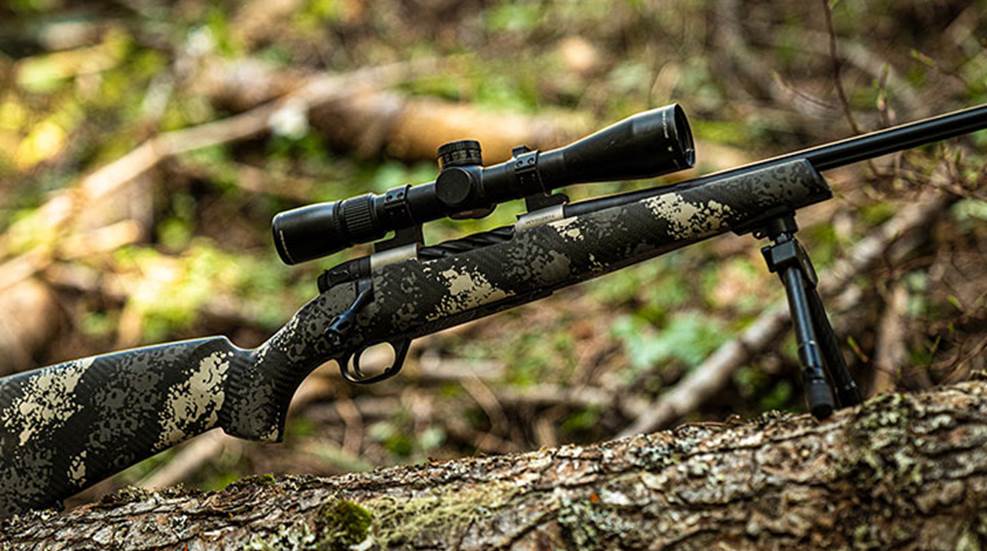
Look at some of the other articles we have written:
